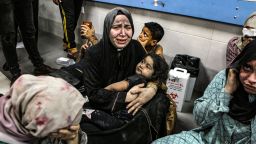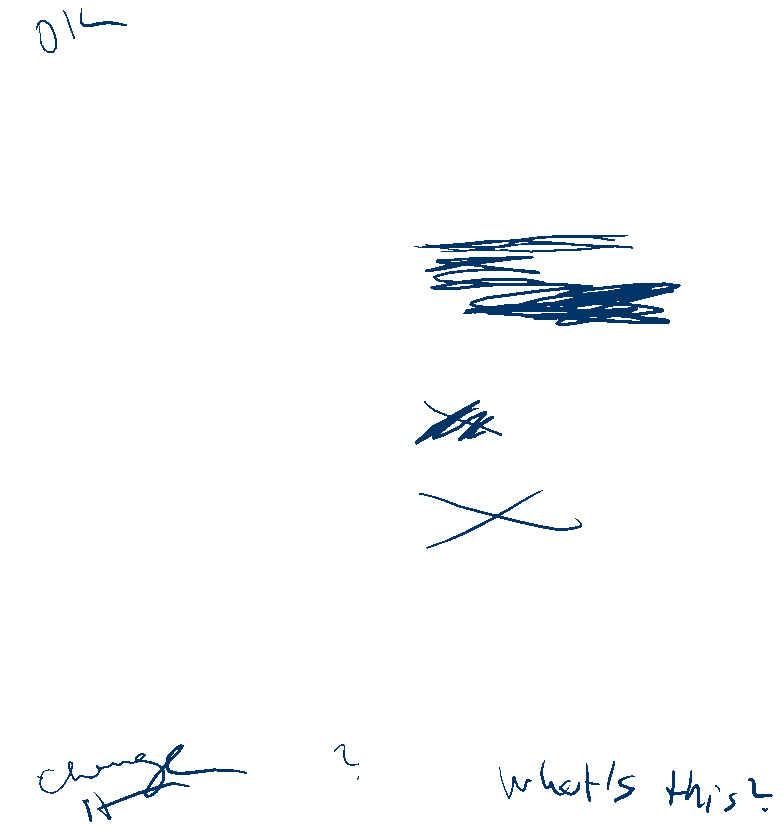Israel’s military has effectively cut Gaza in two, with its ground operations and fiercest aerial bombardment apparently concentrated in the north, forcing thousands of Palestinians to flee south on foot to escape the fighting.
Israel launched its military campaign with the stated aim of destroying Palestinian militant group Hamas and to save the more than 240 hostages taken during the militant group’s brutal October 7 attack, which killed over 1,400 people.
The offensive has so far killed more than 10,700 Palestinians, according to the Palestinian Ministry of Health in Ramallah, which draws on sources in the Hamas-controlled territory. Streams of Palestinians – including women, children and the elderly – are making their way south in a growing exodus along daily evacuation corridors announced by the Israel Defense Forces (IDF).
Global calls for a halt to the fighting are growing more urgent, in hopes of alleviating the humanitarian crisis. More than half of Gaza’s two million civilians have been displaced from their homes. Basic necessities like food, water, fuel and medical supplies are running out. The majority of hospitals have stopped functioning, according to the Palestinian Ministry of Health.
The urban warfare also appears to be getting more complex, with Israeli troops having to contend with Hamas’ elaborate tunnel system and the threat of ambushes. Propaganda videos recently released by Hamas and analyzed by CNN demonstrate how complicated and elaborate the fighting has quickly become.
Here’s what we know about the battle for Gaza City.
What is Israel’s strategy?
Israel’s Defense Minister Yoav Gallant said on Tuesday that IDF troops are at “the heart of Gaza City,” and “tightening the noose” on the urban center in the north of the enclave, targeting Hamas infrastructure and commanders there.
Gallant said that the Israeli soldiers “came from north and south and stormed in coordination with our air force and navy.”
Since the IDF launched its ground offensive into Gaza almost two weeks ago, its troops have pushed forward on three axes – from Gaza’s northwest border along the Mediterranean coast, from the northeast near Beit Hanoun, and from east to west, along the south of Gaza City towards the coast – in an effort to drive a wedge through the center of the strip, cleaving it in half.
On Monday, an IDF spokesperson told CNN that the Israeli military was moving toward Gaza City, which he said the Israeli military had encircled since reaching Gaza’s coast on Sunday.
“This whole city is one big terror base. Underground, they have kilometers of tunnels connecting to hospitals and schools,” Gallant claimed. “We continue to dismantle this capability.”
Danny Orbach, a military historian from the Hebrew University in Jerusalem, described the IDF’s strategy as one of isolation and destruction.
“You don’t want only to inflict punishment or pain on your enemy, you want to deny capabilities from your enemy. And the best way to deny capabilities is to destroy it as an organized military force,” Orbach told CNN.
“The IDF, in my opinion, will first of all try to isolate areas in the Gaza Strip, then to concentrate its resources in the main gravity centers,” he added. “(They) first want to isolate Gaza City from the north and the south and concentrate your forces. This is the most straightforward way.”
Where is fighting taking place?
For weeks, the IDF has said they have been targeting Hamas’ sprawling tunnel network across Gaza. But the videos show that has not eliminated Hamas’ ability to carry out attacks.
CNN has geolocated a number of clashes seen in the footage – released after the ground incursion began – to three main locations: the Al-Shati Refugee camp, Atatra and Beit Hanoun, where fighters can be seen carrying out ambush attacks on IDF troops.
The outcome of the Hamas attacks depicted is unclear from the videos, which are heavily edited.

Hamas said the videos were taken on November 2, 3, 5 and 6. A CNN analysis could not independently confirm the days they were filmed.
CNN military analyst and retired US Lt. General Mark Hertling reviewed the videos and said that Hamas was likely utilizing shape-charge rocket-propelled grenades, which have the potential to be specifically devastating to some military vehicles, such as armored personnel carriers.
An IDF spokesperson declined to comment on the number of Israeli military vehicles that have been disabled or destroyed during the ground invasion, citing “operational security considerations.”
How complicated is Israel’s offensive?
Dismantling Hamas’ tunnels will be a major challenge to IDF troops; the winding network is believed to provide the militants with opportunities to navigate Gaza City and move ammunition and other supplies without being detected.
“It’s hundreds of kilometers of tunnels. And it’s not tunnels that you have to crawl in, it is tunnels that are built (up)” and feature electricity and lighting, Miri Eisin, a retired IDF colonel with a background in military intelligence, told CNN.
The complexity of the tunnel system – and the difficulties of using technology such as GPS devices inside them – gives Hamas fighters a significant strategic advantage over IDF forces, experts suggested.
But “the defenses are not just the tunnels, which are immense,” Eisin said. “It’s booby traps, snipers, suicide bombs, anti tank missiles, a variety of capabilities that were prepared upfront as their defenses” against an IDF campaign.
Hamas fighters are also able to use the aftermath of Israeli military strikes – which have left buildings in ruins – as cover to carry out their ambushes. Hertling said that trying to stop these ambushes would be like “whack-a-mole” unless the IDF was able to knock out every single tunnel complex, tunnel opening or shaft.
“It’s going to take months to do that,” he said, noting that clearing operations can’t be done by vehicles.
What is the humanitarian situation?
Tens of thousands of people have trekked on foot from northern Gaza to the southern regions through temporary evacuation corridors, according to UN and Israeli figures.
“We walked by people who were ripped to parts, dead bodies. We walked beside tanks. The Israelis called us, and they were asking people to take off their clothes and throw their belongings. Children were very tired because there was no water,” Baraa, a 16-year-old girl, said of the trek.
CNN has asked the IDF about the allegation that evacuees were made to remove clothing and get rid of belongings.
After weeks of humanitarian crisis inside the city, the escape itself has been traumatic.
“We came under heavy shelling and had no choice but to leave our area,” said Hani Bakhit, a man along the evacuation route Wednesday. “We ended up using donkey carts because there were no cars, fuel, or drinking water available. Nothing is left for us. They forced us to leave by cutting off all available resources,” he said, referring to Israeli forces.
The IDF has repeatedly called on civilians to move south of Wadi Gaza, a waterway bisecting the center of the strip, as it intensifies its assault on northern Gaza. The UN agency for Palestinian refugees has said that aid workers are providing water and biscuits to evacuees just south of Wadi Gaza.

What is the international community saying?
The United Nations’ human rights chief on Wednesday accused both Hamas and Israel of committing war crimes over the past month. “The collective punishment by Israel of Palestinian civilians amounts also to a war crime, as does the unlawful forcible evacuation of civilians,” Volker Türk, the UN High Commissioner for Human Rights, said.
Human Rights Watch (HRW) has called for an investigation into the Israeli military’s targeting of an ambulance outside Gaza’s biggest hospital as a “possible war crime.”
Israel said on November 3 it that it believed the targeted ambulance was being used by Hamas. HRW, however, says it did not find evidence that it was used for military purposes after interviewing witnesses and verifying visuals of the damaged ambulance and its surrounding area.
The IDF said in a statement to CNN that Hamas has a documented practice of operating near, in or under densely populated areas. It said the IDF take “feasible precautions” so that “incidental damage” to civilians and property is not excessive in relation to expected military advantage.
CNN’s Adi Koplewitz, Tamar Michaelis, Lauren Kent and Abeer Salman contributed reporting.










